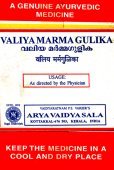Lonika, Loṇikā, Loṇika: 8 definitions
Introduction:
Lonika means something in Hinduism, Sanskrit, Buddhism, Pali, biology. If you want to know the exact meaning, history, etymology or English translation of this term then check out the descriptions on this page. Add your comment or reference to a book if you want to contribute to this summary article.
In Hinduism
Ayurveda (science of life)
Source: Wisdom Library: Āyurveda and botanyLoṇikā (लोणिका) is a Sanskrit word referring to Portulaca oleracea (common Indian parselaue), in the Portulacaceae family. Certain plant parts of Loṇikā are eaten as a vegetable (śāka), according to Caraka in his Carakasaṃhitā sūtrasthāna (chapter 27), a classical Ayurvedic work. The plant is therefore part of the Śākavarga group of medicinal plants, referring to the “group of vegetables/pot-herbs”. Caraka defined such groups (vargas) based on the dietic value of the plant.

Āyurveda (आयुर्वेद, ayurveda) is a branch of Indian science dealing with medicine, herbalism, taxology, anatomy, surgery, alchemy and related topics. Traditional practice of Āyurveda in ancient India dates back to at least the first millenium BC. Literature is commonly written in Sanskrit using various poetic metres.
Biology (plants and animals)
Source: Wisdom Library: Local Names of Plants and DrugsLonika in the Sanskrit language is the name of a plant identified with Glinus oppositifolius (L.) Aug.DC. from the Molluginaceae (Carpetweed) family having the following synonyms: Mollugo oppositifolia, Mollugo spergula. For the possible medicinal usage of lonika, you can check this page for potential sources and references, although be aware that any some or none of the side-effects may not be mentioned here, wether they be harmful or beneficial to health.
Source: Google Books: CRC World Dictionary (Regional names)1) Lonika in India is the name of a plant defined with Alternanthera sessilis in various botanical sources. This page contains potential references in Ayurveda, modern medicine, and other folk traditions or local practices It has the synonym Achyranthes linearifolia Sw. (among others).
2) Lonika is also identified with Portulaca oleracea It has the synonym Portulaca aurea Hort. ex DC. (etc.).
3) Lonika is also identified with Portulaca quadrifida It has the synonym Illecebrum verticillatum Burm. f. (etc.).
Example references for further research on medicinal uses or toxicity (see latin names for full list):
· Fl. Ecuad. (1996)
· Journal of the Arnold Arboretum (1948)
· Flora of the British W.I. (1859)
· Recent Res. Pl. Sci. (1979)
· Transactions of the Academy of Science of St. Louis (1902)
· Synopsis plantarum succulentarum (1812)
If you are looking for specific details regarding Lonika, for example health benefits, side effects, pregnancy safety, diet and recipes, chemical composition, extract dosage, have a look at these references.

This sections includes definitions from the five kingdoms of living things: Animals, Plants, Fungi, Protists and Monera. It will include both the official binomial nomenclature (scientific names usually in Latin) as well as regional spellings and variants.
Languages of India and abroad
Pali-English dictionary
Source: BuddhaSasana: Concise Pali-English Dictionaryloṇika : (adj.) alkaline.
Source: Sutta: The Pali Text Society's Pali-English DictionaryLoṇika, & Loṇiya (adj.) (fr. loṇa) salty, alkaline Dhs. 629.—loṇiya-teliya prepared with salt & oil J. III, 522; IV, 71.—aloṇika unsalted 426 (°aka); VvA. 184; J. I, 228; III, 409. (Page 588)

Pali is the language of the Tipiṭaka, which is the sacred canon of Theravāda Buddhism and contains much of the Buddha’s speech. Closeley related to Sanskrit, both languages are used interchangeably between religions.
Sanskrit dictionary
Source: Cologne Digital Sanskrit Dictionaries: Monier-Williams Sanskrit-English Dictionary1) Loṇikā (लोणिका):—[from loṇa] f. Ponulacca Olerscea, [cf. Lexicographers, esp. such as amarasiṃha, halāyudha, hemacandra, etc.]
2) [v.s. ...] = loṇāmlā, [cf. Lexicographers, esp. such as amarasiṃha, halāyudha, hemacandra, etc.]
3) Loṇīkā (लोणीका):—[from loṇa] f. = loṇikā, [Caraka]
[Sanskrit to German]
Sanskrit, also spelled संस्कृतम् (saṃskṛtam), is an ancient language of India commonly seen as the grandmother of the Indo-European language family (even English!). Closely allied with Prakrit and Pali, Sanskrit is more exhaustive in both grammar and terms and has the most extensive collection of literature in the world, greatly surpassing its sister-languages Greek and Latin.
See also (Relevant definitions)
Query error!
Full-text: Amlalonika, Aloṇika, Lolika, Shakavarga, Rasa.
Relevant text
Search found 8 books and stories containing Lonika, Lona-nika, Loṇa-ṇika, Loṇikā, Loṇika, Loṇīkā; (plurals include: Lonikas, nikas, ṇikas, Loṇikās, Loṇikas, Loṇīkās). You can also click to the full overview containing English textual excerpts. Below are direct links for the most relevant articles:
Journal of Ayurveda and Holistic Medicine
Scientific review on Virechana Dravya (Purgative Drugs) of Charaka Samhita < [Volume 11, issue 11 (2023)]
A review on Priya Nighantu < [Volume 12, issue 8 (2024)]
Critical Analysis of Plant Nomenclature in Ayurveda and its Influence on Binomial Nomenclature < [Volume 11, issue 3 (2023)]
Garuda Purana (by Manmatha Nath Dutt)
Chapter CXCIII - Medical treatment of fever etc < [Dhanvantari Samhita]
World Journal of Pharmaceutical Research
An ethno-botanical survey on shakavarga of anamalai tribes < [2024: Volume 13, January special issue 2]
Portulaca oleracea l. < [2020: Volume 9, March issue 3]
A critical review of patha (cissampelos pariera linn.)- a classical drug < [2022: Volume 11, January issue 1]
Amarakoshodghatana of Kshirasvamin (study) (by A. Yamuna Devi)
International Ayurvedic Medical Journal
Ayurvedic management of bone fracture in smaller bones: a single case study < [2024, Issue 04. April]
Concept of chakshushya dravyas in the kaiyadeva nighantu -review article < [2022, Issue 4, April]
Role of pathya in madhumeha (type-2 diabetes mellitus)-an ayurvedic review < [2016, Issue XI November]
AYU (Journal of Research in Ayurveda)
Assessment of cytotoxicity of Portulaca oleracea Linn. against human colon adenocarcinoma and vero cell line < [Volume 36 (4); 2015 (Oct-Dec)]
Related products


